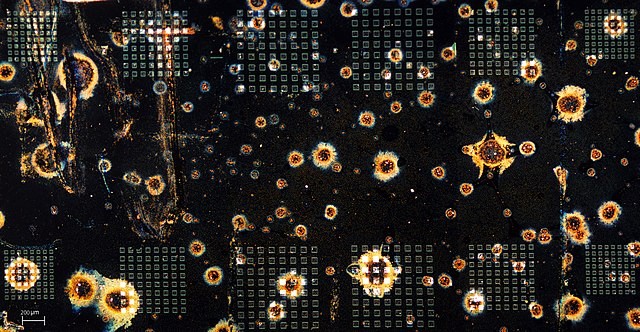A research team recently developed an antimicrobial spray that's depositing a layer of copper nanowires onto a high-touch surface in public spaces.
A EurekAlert! report specified that an ancient metal used for its bacterial properties is the basis for a solution to infection that's based-materials.
The team from Ames National Laboratory, Iowa State University, and the University of Buffalo developed the said antimicrobial spray.
The spray contains copper-zinc nanowires or CuZnNWs or copper nanowires or CuZnNWs and can form an antimicrobial coating on a variety of surfaces.
ALSO READ: How Good Are You at Recognizing Faces? Here's a New Face Test Scientists Want You To Try

Self-assembled nanowires allow the generation of low-cost nanopatterns with uses from antimicrobial surfaces to Nanocircuitry.
Copper Ion That Completely Disables Varus from Replicating Itself
This study published in the RSC Advances journal was initiated by the COVID-19 pandemic, although the findings comprise wider-reaching applications.
People have taken advantage of the antimicrobial properties of copper since 2400 BC for the treatment and prevention of infections and diseases.
It has been effectively proven for inactivating viruses, yeasts, fungi, and bacteria when they are directly in contact with the meta.
Scientist at Ames Lab and one of the lead researchers on the project, Jun Cui, explained that copper ion can penetrate the virus's membrane and then insert into the RNA chain, and completely disable the virus from replicating itself.
Help Mitigate the COVID-19 Situation
In the middle of the pandemic, the DOE asked scientists what can be done to help mitigate the COVID-19 situation, said Cui.
Essentially, Ames Lab is known for projects in materials science, instead of a field that frequently intersects with disease research.
Nevertheless, Cui and his team came up with the idea of applying the antimicrobial properties of copper to help lessen the spread of COVID-19.
Copper Nanowires
The lead researcher also explained that the notion came from a separate project they were carrying out, which is a copper ink designed for printing nanowires employed in flexible electronic devices.
Consequently, the thinking is, that this is ink, and one can dilute it with water, or even ethanol, and then simply spray it. Wherever the surface, one sprays it once and coats it with an extremely light layer of a copper nanowire.
First, there is a need for the surface to be cleaned and disinfected, then, "reformulated copper ink solution can be applied," a similar Phys.org report specified.
Scientists use #coppernanowires to combat the spread of diseases @Ames_Laboratory https://t.co/fWKFgPkbLO https://t.co/T6lgMFSPev
— Phys.org (@physorg_com) July 27, 2022
The ideal coating needs to be thin enough to be transparent. Then, the ink can be diluted with alcohol or water, to make it sprayable, and it works on stainless steel, plastic, and glass surfaces.
2 Types of Copper Ink
The research investigators examined two types of ink, specifically CuZnNW and CuNW. Compared to the plain copper disk, both inks were simply as effective in terms of disabling the virus.
Nevertheless, it took 40 minutes for the copper disk to have the virus disabled while it took the copper inks just 20 minutes to do so. The nanowires worked more rapidly due to their greater surface area.
In a comparison between the two ink coatings, the study authors discovered that the CuNW inactivated the virus more rapidly compared to CuZnNW during the first 10 minutes.
Nevertheless, CuZnNW had a steady and sustainable copper ion release, compared to CuNW, whic is making the coating effective for a longer period.
Eventually, the researchers concluded that the CuZnNW was the best choice for a sprayable copper nanowire coating for antimicrobial purposes.
According to Cui, this work was vital, not only because of the pandemic, but since these nanowires can shield against many different microbes, chances are, that there can be a lasting effect on human society.
Related information about copper nanowires is shown on Book Publisher International's YouTube video below:
RELATED ARTICLE: Silver Nanowires Can Be Potential Alternatives for Everyday Devices Like Mobile Phones, Solar Panels; Boasts Better Quality, Versatility
Check out more news and information on Nanotechnology and Medicine & Technology in Science Times.










!['Cosmic Glitch' in Einstein's Theory of General Relativity Could Be Explained in This New Scientific Tweak [Study]](https://1721181113.rsc.cdn77.org/data/thumbs/full/53435/258/146/50/40/cosmic-glitch-in-einsteins-theory-of-general-relativity-could-be-explained-in-this-new-scientific-tweak-study.jpeg)



